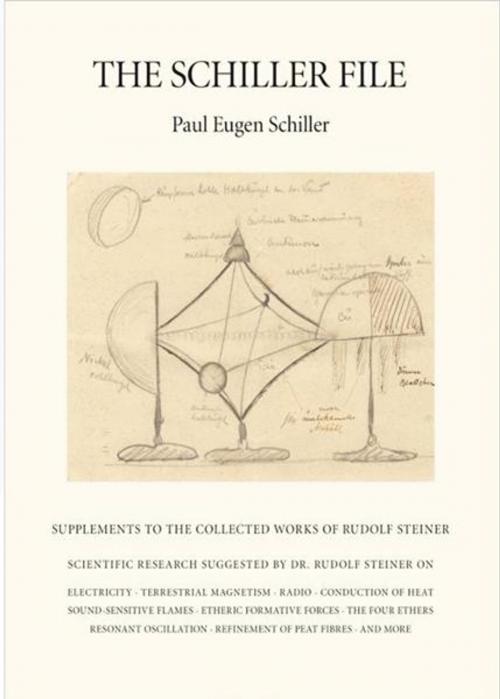| Author: | Paul-Eugen Schiller, Henry Goulden | ISBN: | 9780880109536 |
| Publisher: | SteinerBooks | Publication: | January 1, 2011 |
| Imprint: | SteinerBooks | Language: | English |
| Author: | Paul-Eugen Schiller, Henry Goulden |
| ISBN: | 9780880109536 |
| Publisher: | SteinerBooks |
| Publication: | January 1, 2011 |
| Imprint: | SteinerBooks |
| Language: | English |
Anthroposophy has manifold roots in natural science. Rudolf Steiner never tired of saying that the development of scientific awareness had given people the possibility of freedom, that the way to cognizing the spiritual world is based on the natural scientific attitude, and that certainty of such knowledge is comparable to the certainty found in mathematics and natural science. Especially noteworthy is Steiner's comments on the importance of how experiments should be donefirst, that scientists should adopt the attitude that their workbench is an altar, and second, that scientists should seek the cooperation of elemental beings. Steiner was concerned that people do new experiments because of the many new views and educational possibilities that can arise. Consequently, in 1920, a special institute was established with departments for physics and biology in Stuttgart, financed by the scanty means of the joint-stock company, Der kommende Tag (literally, the coming day). The purpose of the institute were described by Steiner: What we lack is not the empirical material, but the gathering of possibilities, which are also possibilities of explaining one phenomenon through another phenomenon. Therefore, in our research institute, we will no longer do experiments using the old methods, for there really is an excess of empirical material available. Though the institute eventually closed, owing to financial difficulties, in 1926 on the initiative of Guenther Wachsmuth, Paul Eugen Schiller took most of the materials to Dornach. There, he set up a simple physics laboratory where he worked for several years, working mainly on Steiners indications about the sensitive flame. Drawn from Schillers notebooks, this important volume describes natural scientific research by scientists working at the Goetheanum and following suggestions from Rudolf Steiner, leading, for example, to research on gases at low temperatures and high vacuum. Steiner told them, You will tend to produce conditions at the Suns center, where matter is annihilated and exists in a negative state; similarly with space. Spectrum analysis was used in these experiments, but for true results, the spectroscope would need to be modified. On electricity, Steiner told them, We do not know electricity, except by its effects.... In origin, it is an astral force.
Anthroposophy has manifold roots in natural science. Rudolf Steiner never tired of saying that the development of scientific awareness had given people the possibility of freedom, that the way to cognizing the spiritual world is based on the natural scientific attitude, and that certainty of such knowledge is comparable to the certainty found in mathematics and natural science. Especially noteworthy is Steiner's comments on the importance of how experiments should be donefirst, that scientists should adopt the attitude that their workbench is an altar, and second, that scientists should seek the cooperation of elemental beings. Steiner was concerned that people do new experiments because of the many new views and educational possibilities that can arise. Consequently, in 1920, a special institute was established with departments for physics and biology in Stuttgart, financed by the scanty means of the joint-stock company, Der kommende Tag (literally, the coming day). The purpose of the institute were described by Steiner: What we lack is not the empirical material, but the gathering of possibilities, which are also possibilities of explaining one phenomenon through another phenomenon. Therefore, in our research institute, we will no longer do experiments using the old methods, for there really is an excess of empirical material available. Though the institute eventually closed, owing to financial difficulties, in 1926 on the initiative of Guenther Wachsmuth, Paul Eugen Schiller took most of the materials to Dornach. There, he set up a simple physics laboratory where he worked for several years, working mainly on Steiners indications about the sensitive flame. Drawn from Schillers notebooks, this important volume describes natural scientific research by scientists working at the Goetheanum and following suggestions from Rudolf Steiner, leading, for example, to research on gases at low temperatures and high vacuum. Steiner told them, You will tend to produce conditions at the Suns center, where matter is annihilated and exists in a negative state; similarly with space. Spectrum analysis was used in these experiments, but for true results, the spectroscope would need to be modified. On electricity, Steiner told them, We do not know electricity, except by its effects.... In origin, it is an astral force.















